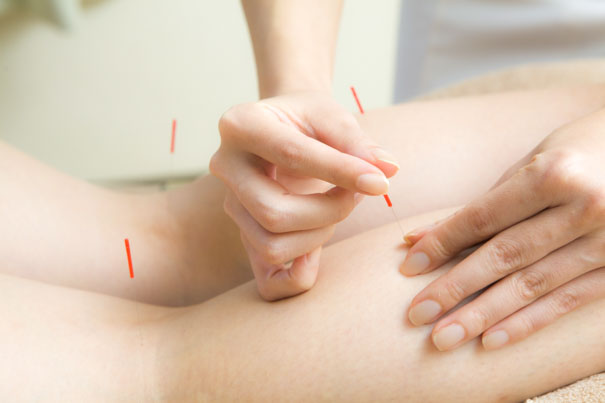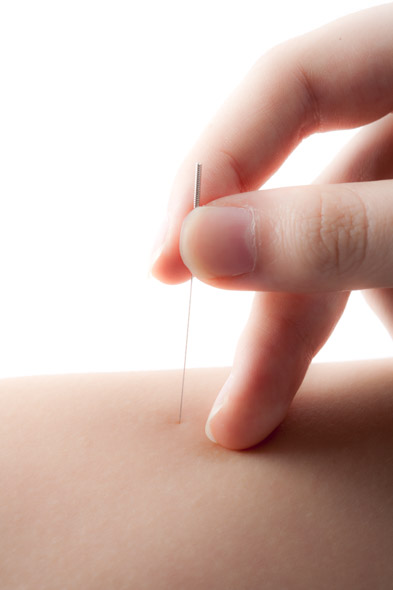Acupuncture and moxibustion alleviate rheumatoid arthritis. Research published in the Jilin Journal of Traditional Chinese Medicine finds an 83.3% total effective rate for acupuncture combined with moxibustion for the treatment of rheumatoid arthritis. Lower levels of clinical success were achieved by using acupuncture and moxibustion independently as standalone treatment modalities. However, once the researchers combined acupuncture and moxibustion into one treatment protocol, the positive patient outcome rate increased significantly. 
Rheumatoid arthritis (RA) is an autoimmune disorder characterized by joint inflammation and pain. X-rays, MRIs, ultrasonography, and blood tests are useful diagnostic tools. Joint deformities due to cartilage and bone destruction demonstrate common patterns that indicate RA. For example, rheumatoid arthritis of the hands typically affects the metacarpophalangeal and proximal interphalangeal joints. The distal interphalangeal joints are often unaffected. The presence of rheumatoid factor, antibodies to cyclic citrullinated peptides, and an elevated erythrocyte sedimentation rate are common in patients with rheumatoid arthritis.
Three separate groups received therapies at a rate of five times per week for four weeks at Shunyi Hospital of Traditional Chinese Medicine (TCM). The standalone acupuncture and moxibustion study groups achieved positive patient outcomes, however, the acupuncture plus moxibustion study group demonstrated optimal clinical outcomes. Acupuncture was applied to the following acupoints:
- Mingmen, DU4
- Zusanli, ST36
- Shenshu, BL23
- Pishu, BL20
- Ganyu, BL18
- Quchi, LI11
- Taixi, KD3
- Hegu, LI4
- Waiguan, SJ5
- Yangchi, SJ4
- Wangu, GB12
- Shenmai, BL62
- Kunlun, BL60
- Yanglingquan, GB34
Lifting, thrusting, and rotating manual acupuncture techniques were applied to elicit deqi at the acupoints. Moxibustion was applied to the following acupoints: Mingmen, Pishu, Shenshu, Zusanli, and Wangu. Total needle retention time was thirty minutes per acupuncture treatment session. This acupuncture plus moxibustion protocol achieved an 83.3% total effective rate.
The aforementioned research of Wang et al. (2014) is consistent with the findings of Ouyang et al. (2011) whose research concludes that electroacupuncture “could effectively lower the contents of TNF-α and VEGF in peripheral blood and joint synovia to improve the internal environment for genesis and development of RA, so as to enhance the clinical therapeutic effectiveness.” Manual acupuncture and electroacupuncture significantly reduced both blood and synovial joint levels of tumor necrosis factor-a (TNF-a) and vascular endothelial growth factor (VEGF) for patients with rheumatoid arthritis. However, electroacupuncture lowered VEGF more significantly than manual acupuncture.
Liu et al. (2015) took a slightly different approach to TCM for the treatment of rheumatoid arthritis and produced significant results. Liu et al. (2015) combined acupuncture with herbal medicine into an integrated treatment regimen. Acupuncture plus Dang Gui Si Ni Tang resulted in a total effective rate of 93.75%. The researchers concluded that acupuncture combined with the herbal formula Dang Gui Si Ni Tang has a “significant curative effect on rheumatoid arthritis….”
Research published in the Clinical Journal of Chinese Medicine (Wang et al., 2014) demonstrated significant positive patient outcomes but with a different herbal formula: Gui Zhi Shao Yao Zhi Mu Tang (Cinnamon Twig, Peony, and Anemarrhena Decoction). The total effective rate for acupuncture plus Gui Zhi Shao Yao Zhi Mu Tang was 95.08%. Notably, the acupuncture plus herbal medicine study group significantly outperformed a drug therapy group.
The study compared patients taking drug therapy with patients receiving acupuncture plus herbal medicine. The drug therapy group consumed a nonsteroidal anti-inflammatory drug (NSAID): diclofenac sodium (75 mg, once per day, sustained release tablet). In addition, the drug group consumed methotrexate tablets (10 mg, once per week). The total effective rate for drug therapy was 68.85% compared with 95.08% for acupuncture plus herbal. The adverse effect rate was 18% for drug therapy and only 3.2% for acupuncture plus herbs. 
The study design used a semi-protocolized structure allowing for modifications of the acupuncture point prescription and herb formula. All patients received the following herbal formula ingredients:
- Gui Zhi, 15g
- Chi Shao Yao, 12g
- Zhi Mu, 12g
- Fu Zi, 10g
- Ma Huang, 9g
- Fang Feng, 15g
- Bai Zhu, 12g
- Gan Cao, 6g
Modifications were allowed for three diagnostic variables. For cases of acute symptoms, the following herbs were added to the base formula:
- Qin Jiao, 12g
- Shen Jin Cao, 12g
- Qiang Huo, 12g
For cases of chronic symptoms, the following herbs were added:
- Huang Qi, 45g
- Du Zhong, 15g
- Niu Xi, 12g
For cases of severe pain, the following herbs were added:
- Yan Hu Suo, 12g
- Lu Feng Fang, 12g
- Wu Tou, 9g
The acupuncture point prescription consisted of a set of primary acupuncture points and additional secondary acupuncture points based on diagnostic variations. The primary acupuncture point prescription applied to all patients was the following:
- Jinsuo, DU8
- Sanyinjiao, SP6
- Zusanli, ST36
- Ganshu, BL18
- Shenshu, BL23
- Pishu, BL20
For patients with arm pain, the following acupoints were added:
- Tianjing, SJ10
- Waiguan, SJ5
- Yangchi, SJ4
- Hegu, LI4
For patients with leg pain, the following acupoints were added:
- Weizhong, BL40
- Dubi, ST35
- Kunlun, BL60
- Jiexi, ST41
- Yanglingquan, GB34
The aforementioned studies indicate that acupuncture, moxibustion, and herbal medicine are helpful therapeutic modalities for patients with rheumatoid arthritis. The evidence strongly indicates that TCM therapy is a responsible and effective approach to pain management protocols for patients with rheumatoid arthritis. Given the potential severity of this condition, additional research is warranted.
References:
Wang SG, Zhao J, Yao J, Yang Y, Mao XW & Hong QY. (2014). Clinical research on acupuncture combined with moxibustion on the treatment of rheumatoid arthritis. Jilin Journal of Traditional Chinese Medicine. 34(10).
Tang ZL, Song XG, Li J, et al. (2001). Moxibustion anti-inflammatory and immunity boosting effects on pineal glands in the regulation of melatonin. China Journal of Acupuncture. 21(7): 429.
Ouyang, Ba-si; Gao, Jie; Che, Jian-li; Zhang, Yin; Li, Jun; Yang, Hai-zhou; Hu, Tian-yan; Yang, Man; Wu, Yuan-jian; Ji, Ling-ling. Effect of electro-acupuncture on tumor necrosis factor-α and vascular endothelial growth factor in peripheral blood and joint synovia of patients with rheumatoid arthritis. Chinese Journal of Integrative Medicine. 2011-07-01. Chinese Association of Traditional and Western Medicine, China Academy of Chinese Medical Sciences. 672-0415, 505- 509 v17 issue 7.
Liu Xiaoli. “Efficacy Observation on Acupuncture Combined with Danggui Sini Decoction for Rheumatoid Arthritis.” Chinese Manipulation & Rehabilitation Medicine. 2015 (3), R246, 116300.
You, Wei-Hua, Ping Wang, Mao-Qing Li, Yu Zhang, Yu-Lan Peng, and Feng-Ling Zhang. "Therapeutic effects of modified Danggui Sini Decoction on plasma level of advanced glycation end products in patients with Wagner grade 0 diabetic foot: a randomized controlled trial." Zhong Xi Yi Jie He Xue Bao 7, no. 7 (2009): 622-628.
Chen, Qing-quan, Xuesong Han, Wan-ming Wang, Liangyu Zhao, and Aimin Chen. "Danggui Sini Decoction Ameliorates Myelosuppression in Animal Model by Upregulating Thrombopoietin Expression." Cell biochemistry and biophysics (2014): 1-6.
Wang, Zizhen. “Clinical observation on treating rheumatoid arthritis with the Guizhi Shaoyao Zhimu decoction plus acupuncture.” Clinical Journal of Chinese Medicine 6.4 (2014): 89-90.


